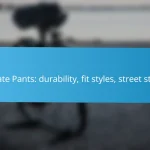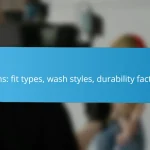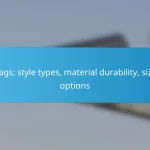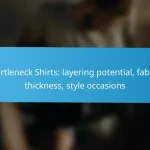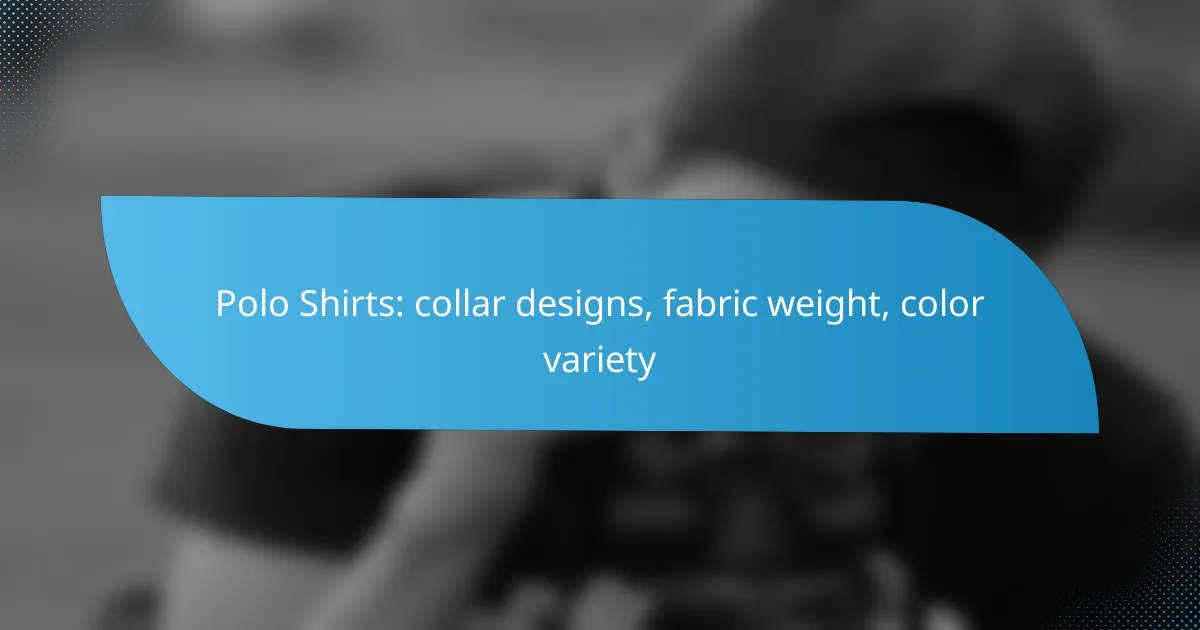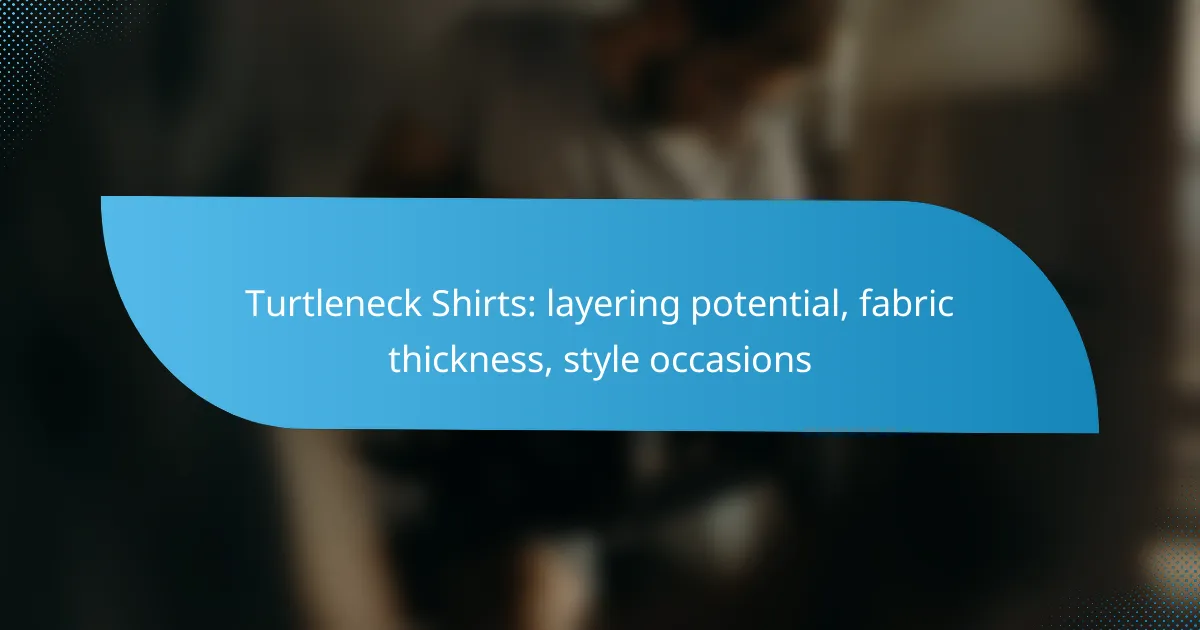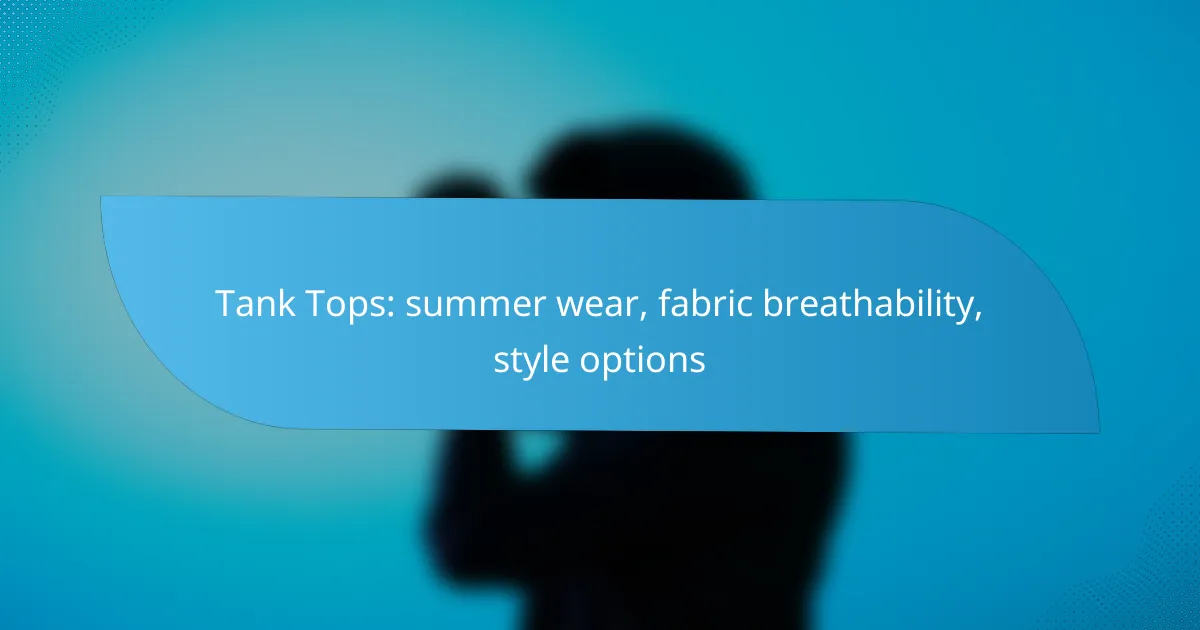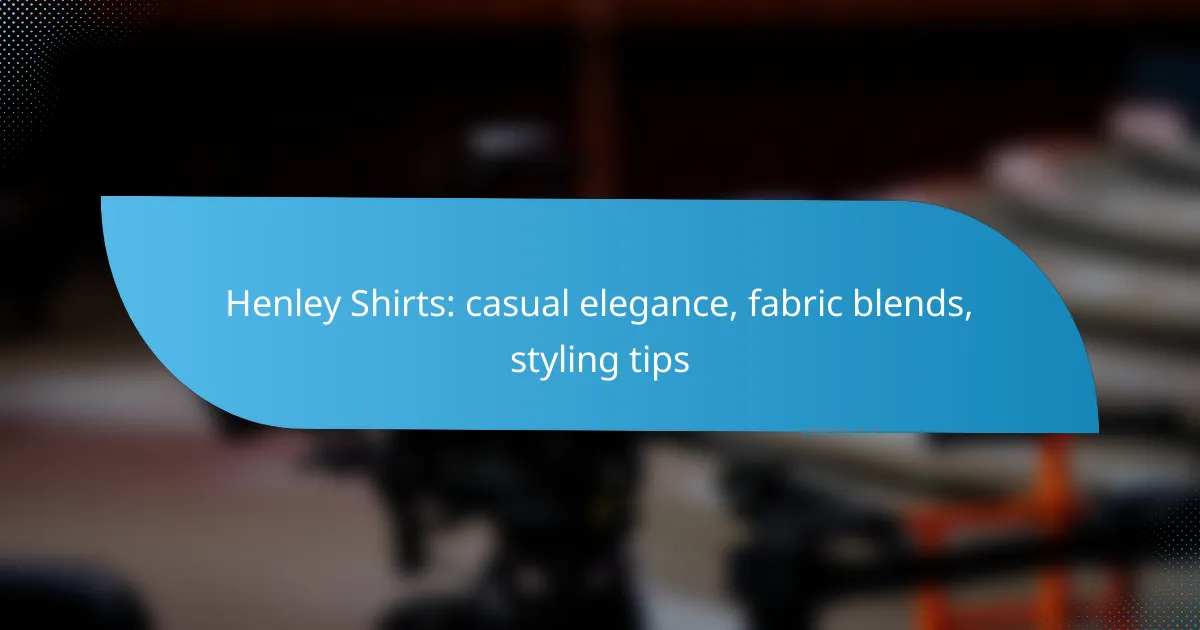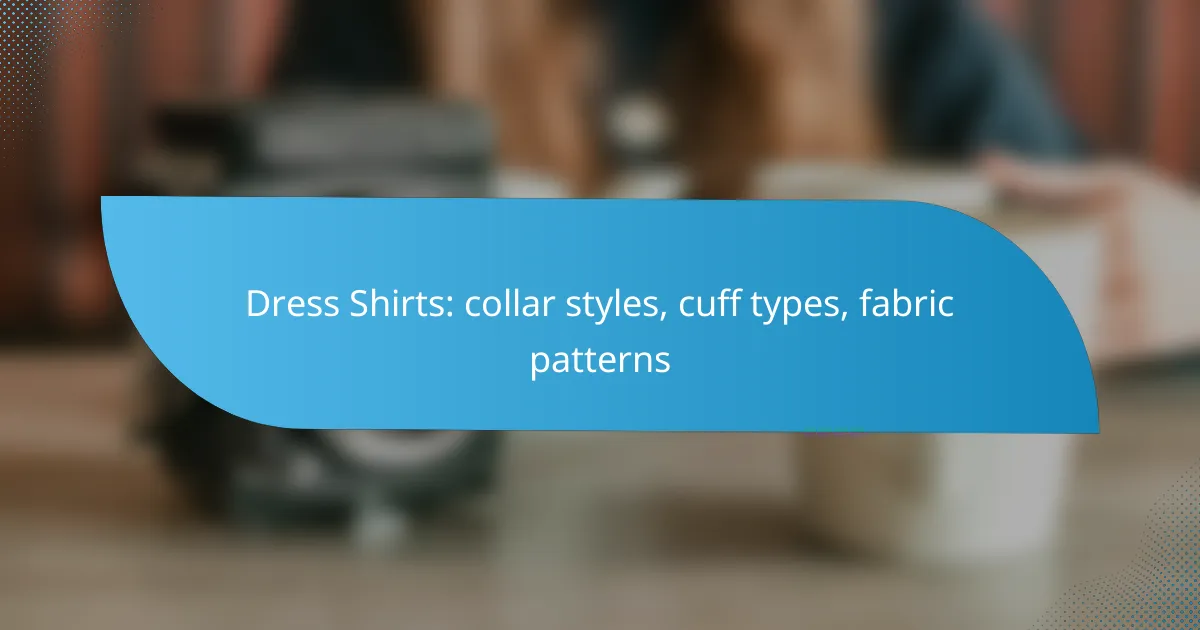Polo shirts are versatile wardrobe staples characterized by their distinctive collar designs, such as classic, button-down, and contrast collars, each offering a unique style for various occasions. The fabric weight plays a crucial role in determining the shirt’s comfort and durability, with lighter materials providing breathability and heavier fabrics offering structure. Additionally, the wide array of colors available, from timeless whites to vibrant hues and patterns, ensures there’s a perfect polo for every personal style and event.

What are the best collar designs for polo shirts?
The best collar designs for polo shirts include classic, button-down, spread, pocket, and contrast collars. Each design offers a unique aesthetic and functionality, catering to different styles and occasions.
Classic collar
The classic collar is the traditional design found on most polo shirts. It features a soft, rounded shape that provides a timeless look suitable for both casual and semi-formal settings.
This collar style pairs well with various outfits, making it versatile for different occasions. When choosing a classic collar, consider the fabric weight, as heavier fabrics may alter the collar’s drape.
Button-down collar
The button-down collar includes small buttons that fasten the collar points to the shirt, preventing them from flapping. This design adds a touch of sophistication while maintaining a relaxed feel.
Ideal for casual and smart-casual wear, the button-down collar works well with a variety of fabrics. Ensure the buttons are securely stitched to avoid any wardrobe malfunctions during wear.
Spread collar
The spread collar features a wider distance between the collar points, creating a more open neckline. This design is often favored for a more modern and stylish appearance.
Spread collars are best suited for dressier occasions and can accommodate a tie or be worn open for a casual look. When selecting a spread collar, consider the shirt’s overall fit to maintain balance in your outfit.
Pocket collar
The pocket collar incorporates a small pocket on the left side, adding a functional element to the polo shirt. This design is practical for carrying small items while maintaining a stylish appearance.
When opting for a pocket collar, ensure the pocket is proportionate to the shirt size. This design is particularly popular in more casual settings, such as outdoor events or relaxed gatherings.
Contrast collar
The contrast collar features a different color or pattern than the rest of the shirt, creating a striking visual effect. This design adds a unique flair and can elevate a simple polo shirt.
When choosing a contrast collar, consider color coordination with the rest of your outfit. This style is best for casual to smart-casual occasions, making it a fun choice for social events.
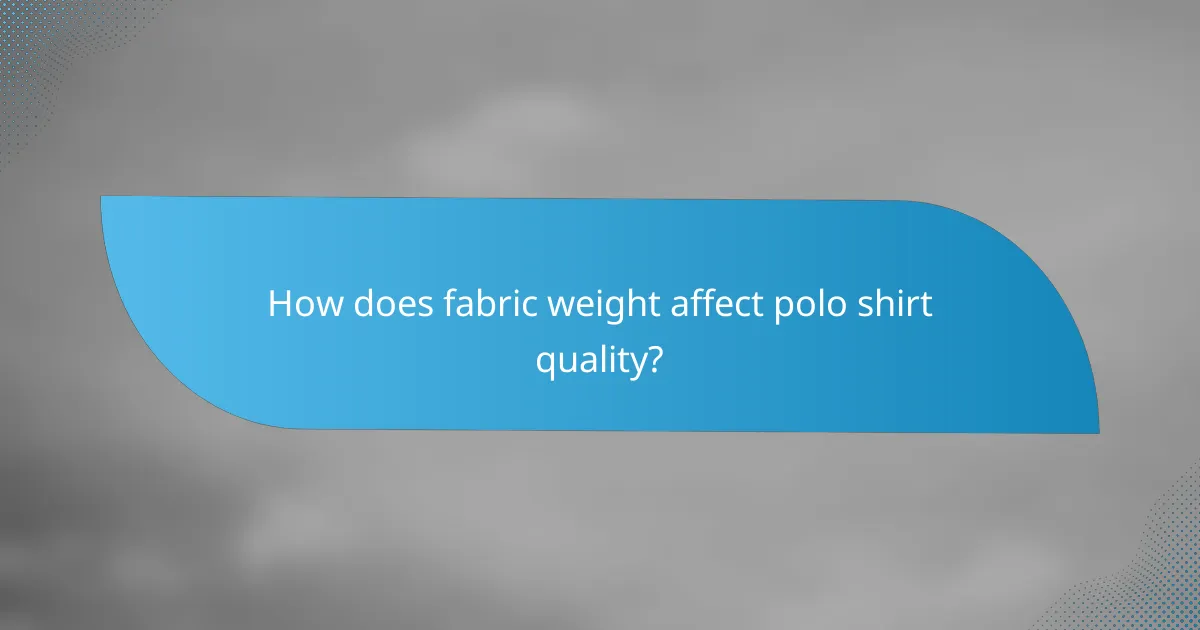
How does fabric weight affect polo shirt quality?
Fabric weight significantly impacts the quality of polo shirts, influencing their comfort, durability, and suitability for different occasions. Generally, lighter fabrics offer breathability, while heavier options provide durability and structure.
Lightweight fabric for breathability
Lightweight polo shirts, typically weighing around 130-180 grams per square meter (gsm), are ideal for warm weather. They allow for better airflow, making them comfortable for outdoor activities or casual wear during hot months.
When choosing lightweight options, look for materials like cotton blends or polyester, which enhance moisture-wicking properties. This can help keep you cool and dry, especially in humid climates.
Medium weight for versatility
Medium-weight polo shirts, usually between 180-220 gsm, strike a balance between comfort and durability. They are suitable for various occasions, from casual outings to slightly formal events.
These polos can be worn year-round, layered under jackets or sweaters in cooler weather. Opt for medium-weight fabrics that combine cotton with synthetic fibers for added stretch and resilience.
Heavyweight for durability
Heavyweight polo shirts, often exceeding 220 gsm, are designed for longevity and rugged use. They are less prone to wear and tear, making them suitable for work environments or outdoor activities.
When selecting heavyweight options, consider materials like thick cotton or blended fabrics that provide structure and a polished look. While they may be less breathable, their durability can justify the trade-off in specific settings.
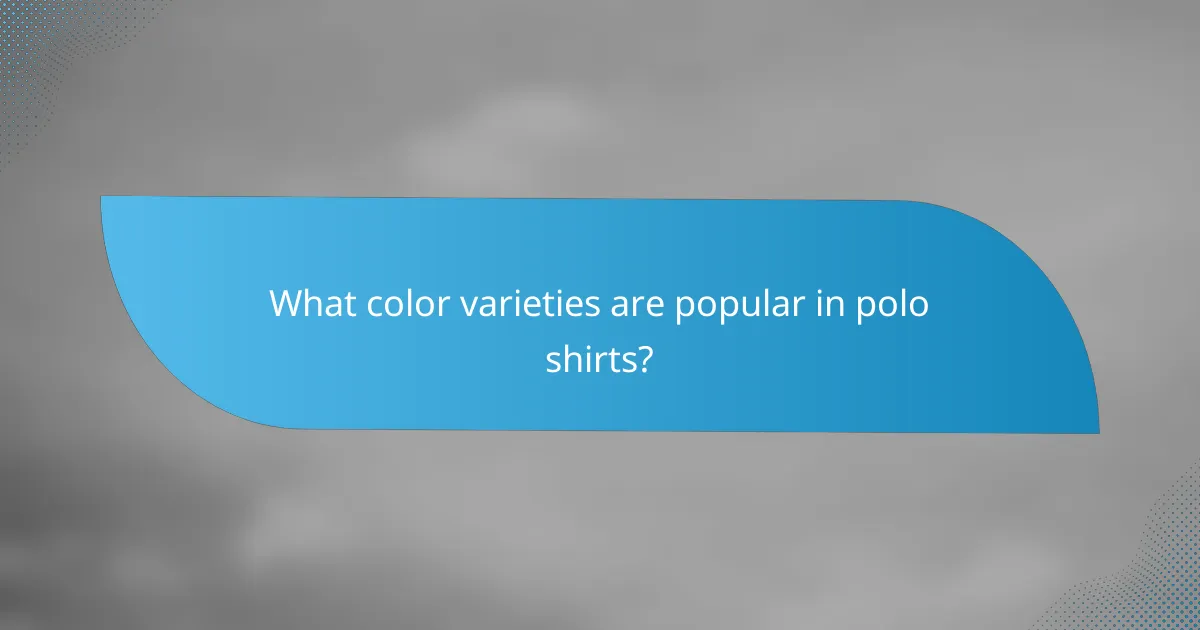
What color varieties are popular in polo shirts?
Polo shirts are available in a wide range of colors, with some shades being more popular than others. Classic options like white, bold colors, pastel shades, and patterned designs cater to various tastes and occasions.
Classic white
Classic white polo shirts are a staple in many wardrobes due to their versatility. They can be easily paired with jeans, shorts, or dress pants, making them suitable for both casual and semi-formal settings. White polos are often favored for their clean, crisp look and ability to reflect heat, making them ideal for warmer climates.
Bold colors like red and blue
Bold colors such as red and blue are popular choices for those looking to make a statement. These vibrant hues can add energy to an outfit and are often used in sports teams and corporate branding. When selecting a bold color, consider the occasion; bright colors can be great for casual outings but may not be suitable for more formal events.
Pastel shades for summer
Pastel shades, including light pink, mint green, and baby blue, are particularly popular during the summer months. These soft colors evoke a relaxed, laid-back vibe, perfect for outdoor activities and warm weather. Pastels are often chosen for casual gatherings, barbecues, or beach outings, providing a refreshing alternative to darker tones.
Patterned options like stripes
Patterned polo shirts, especially those featuring stripes or checks, offer a stylish twist on the classic design. Stripes can create a visually appealing look and add dimension to an outfit. When choosing patterned polos, consider the scale of the pattern; larger stripes can be bolder, while smaller patterns tend to be more subtle and versatile.

What factors should I consider when choosing a polo shirt?
When choosing a polo shirt, consider fit and sizing, fabric composition, and brand reputation. These factors influence comfort, durability, and style, ensuring you select a shirt that meets your needs.
Fit and sizing
Fit and sizing are crucial for comfort and appearance. Polo shirts typically come in various fits, including slim, regular, and relaxed. It’s essential to try on different sizes to find the one that complements your body shape best.
When measuring for size, consider your chest, waist, and arm length. A well-fitted polo should allow for movement without being too loose or tight. Remember that different brands may have slightly different sizing charts, so always check before purchasing.
Fabric composition
The fabric composition of a polo shirt affects its feel, breathability, and durability. Common materials include cotton, polyester, and blends. Cotton offers softness and breathability, while polyester is more durable and moisture-wicking.
For warmer climates, lightweight fabrics with a weight of around 150-200 grams per square meter are ideal. In contrast, heavier fabrics may be better suited for cooler weather. Always check the care instructions, as some fabrics may require special washing methods.
Brand reputation
Brand reputation plays a significant role in the quality and longevity of a polo shirt. Established brands often have a history of producing reliable clothing, which can lead to better fabric quality and construction. Research customer reviews and ratings to gauge satisfaction.
While premium brands may come at a higher price, they often offer better fit and durability. However, there are also budget-friendly options that provide good quality. Look for brands that offer a balance of quality and value to ensure your investment pays off.

How do I care for my polo shirts?
Caring for your polo shirts involves proper washing, drying, and ironing techniques to maintain their quality and longevity. Following these guidelines will help you keep your polo shirts looking fresh and vibrant for an extended period.
Washing instructions
When washing polo shirts, use cold or lukewarm water to prevent shrinking and fading. It’s advisable to turn the shirts inside out to protect the outer fabric and colors. Use a mild detergent and avoid bleach, as it can damage the fibers and alter the color.
For best results, wash polo shirts with similar colors to avoid dye transfer. If your shirt has specific care instructions on the label, always follow those recommendations for optimal care.
Drying tips
Air drying is the best method for drying polo shirts, as it helps maintain their shape and prevents shrinkage. Hang the shirts on a clothesline or a hanger in a well-ventilated area, away from direct sunlight to avoid fading.
If you prefer using a dryer, set it to a low heat setting to minimize the risk of damage. Remove the shirts while they are still slightly damp to reduce wrinkles and make ironing easier.
Ironing guidelines
Iron polo shirts on a low to medium heat setting, and always check the care label for specific instructions. Iron the shirts inside out to protect the fabric and avoid shiny marks on the surface. Use steam or a damp cloth to help remove stubborn wrinkles.
For best results, focus on the collar and sleeves first, as these areas tend to wrinkle more easily. Avoid ironing directly on any logos or embellishments to prevent damage.

What are the latest trends in polo shirt designs?
The latest trends in polo shirt designs focus on innovative collar styles, varied fabric weights, and a broad spectrum of colors. These elements cater to both casual and formal settings, enhancing versatility and personal expression.
Collar Designs
Modern polo shirts feature a variety of collar designs, including classic, button-down, and contrasting colors. The classic collar remains popular for its timeless appeal, while button-down collars offer a more structured look suitable for smart-casual occasions.
Contrasting collar styles, where the collar color differs from the shirt body, have gained traction, adding a unique flair. Additionally, some brands are experimenting with collarless designs, appealing to those seeking a minimalist aesthetic.
Fabric Weight
Fabric weight is crucial in determining the comfort and suitability of polo shirts for different climates. Lightweight fabrics, typically around 150-200 grams per square meter, are ideal for warm weather, offering breathability and ease of movement.
Conversely, heavier fabrics, ranging from 200-300 grams per square meter, provide warmth and structure, making them suitable for cooler seasons. When choosing a polo, consider the fabric’s weight in relation to the intended use and climate.
Color Variety
The color variety in polo shirts has expanded significantly, with options ranging from classic neutrals to vibrant hues. Traditional colors like navy, white, and black remain staples, while bold colors such as bright reds, greens, and pastels cater to those looking to make a statement.
Furthermore, seasonal collections often introduce limited-edition colors, allowing for fresh updates to your wardrobe. When selecting a color, consider your personal style and how well it complements your existing clothing.
